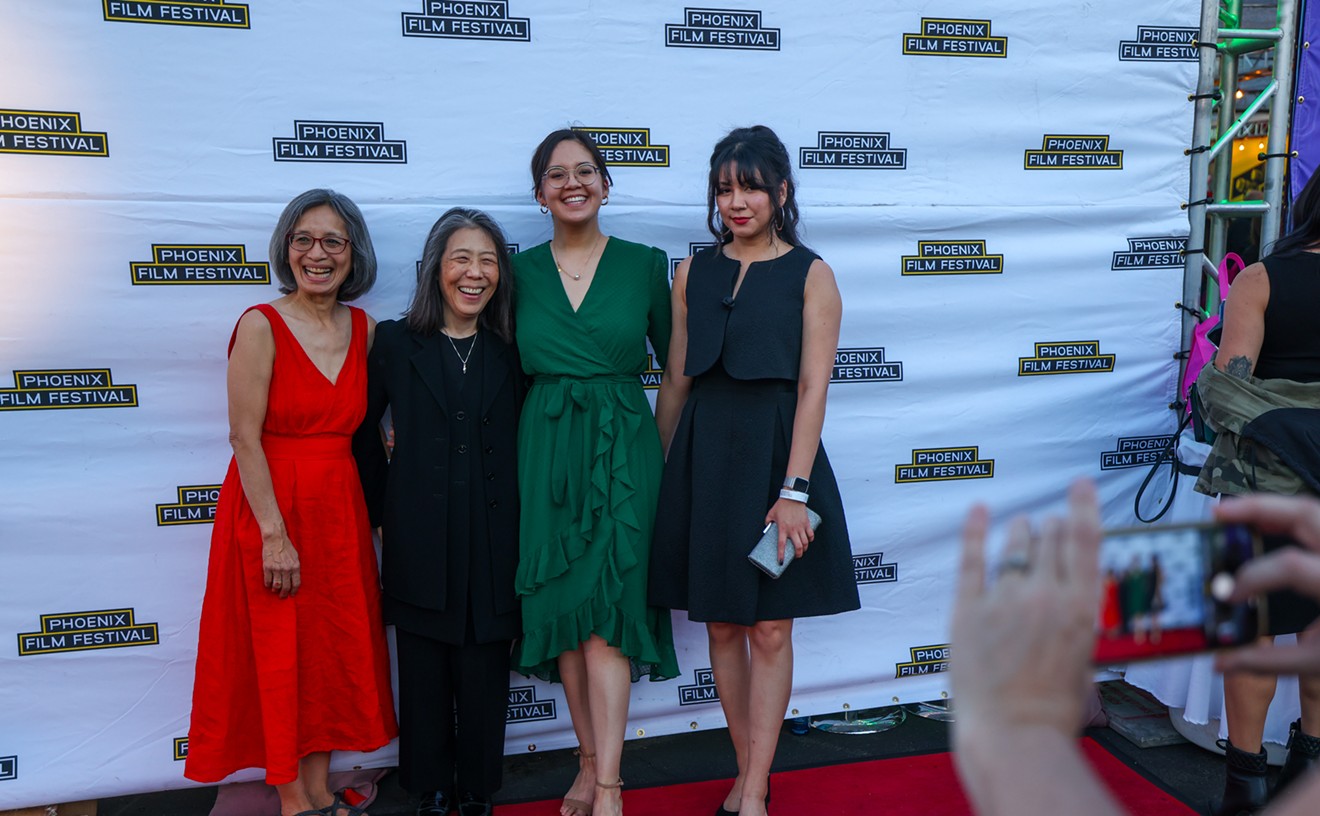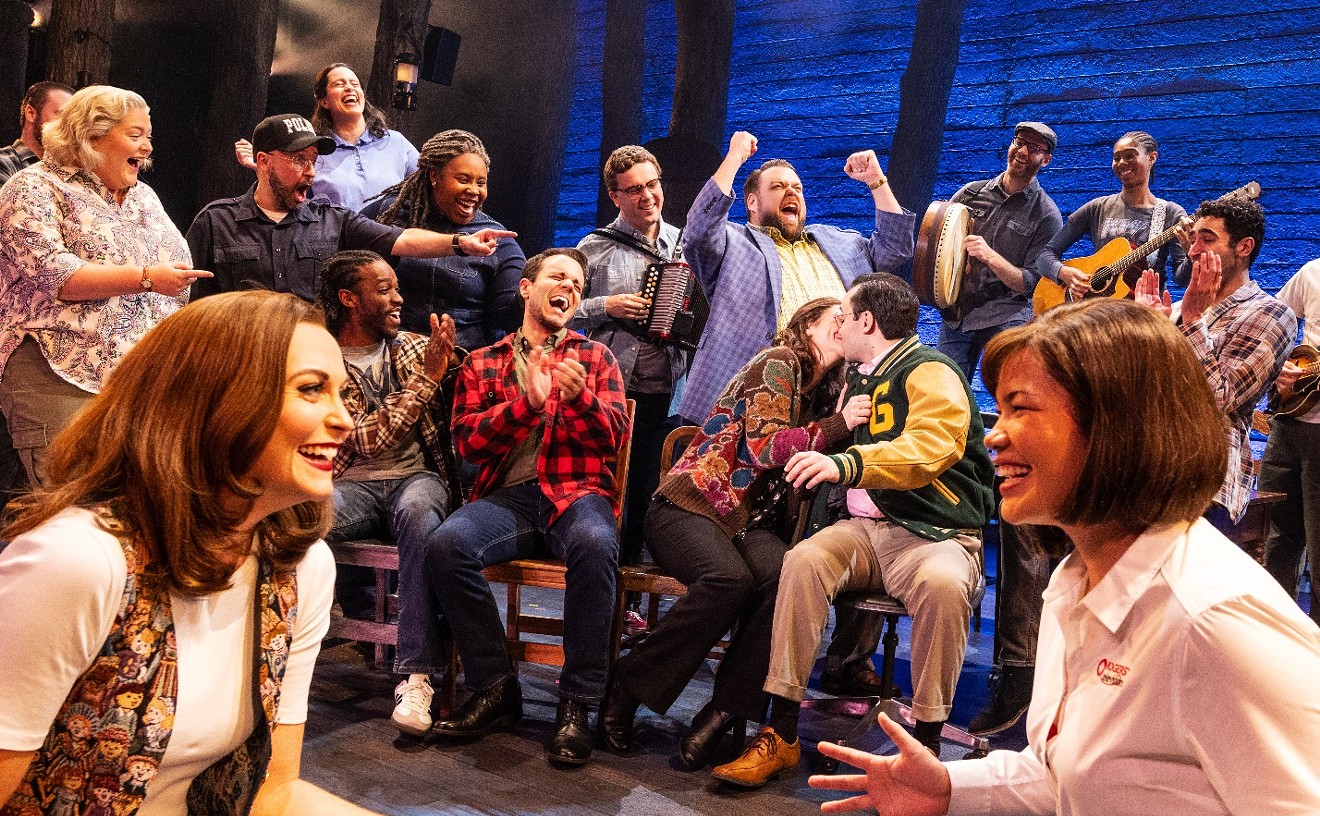"You know," she said, pointing her hot-pink feather duster at me, "there are other books in the world. I've been cleaning for you for years, and that book about Winnie Ruth Judd is the only book you ever seem to read."
It's not true, of course. I read voraciously and rarely revisit any book; there are too many gorgeous novels on my "to do" list to do much re-reading. But I can't seem to put down Jana Bommersbach's The Trunk Murderess: Winnie Ruth Judd, published in 1992 and based on a pair of New Times features Bommersbach had written a few years earlier, when she was this paper's editor in chief. With those features, Bommersbach became the first journalist to untangle the messy snarl of Winnie Ruth's reputation as a murderess; the first to explain how this frequent fugitive from the local nuthouse was found innocent of murdering her two best friends, chopping one of them into pieces, and stuffing both girls into a couple of steamer trunks that she took with her on a train to Los Angeles.
I've probably read Bommersbach's book a half-dozen times, and not just because it's such a compelling read, one that humanizes a woman who'd been written off as a nut-box and a butcher so many years before; a woman who escaped the electric chair but wound up locked away in the state mental hospital for decades even though she wasn't crazy. I love this book because it brings 1930s small-town Phoenix so vividly to life. And I especially love how, after reading this fascinating whodunit, I can hop in my car and visit the scenes of the various crimes that make up Winnie Ruth's sad story.
There's the house on Lynwood Street, practically visible from my front porch, where Winnie Ruth resided as a live-in nanny; and the house next door to that one, home of Jack Halloran, Winnie's married boyfriend and the most likely suspect in the murder case. There's the handsome Grunow Memorial Clinic on East McDowell Road, where Winnie and Anne LeRoi, one of the victims, worked. And there's the rundown shack on East Moreland Street where Winnie's parents lived while she was incarcerated at the nearby Arizona State Hospital, to which Winnie once fled during one of her many escapes from the booby hatch.
At the time of the book's publication, some critics ragged on Bommersbach's inconclusive findings about who actually killed Anne and Hedvig "Sammy" Samuelson in October 1931. But for me, the real mystery has always been this: Whatever became of the "murder house" at 2929 North Second Street? In 1930, Winnie lived in one side of this bungalow duplex with her husband. After he took off for California, she moved in with Anne and Sammy, who resided in the other half. The girls were murdered there, presumably between the front room and kitchen doorway, and possibly by Winnie Ruth in self-defense during a violent argument among the three women.
All sources suggest that 2929 was torn down long ago, and photographs of the half-lot between 2927 and 2931, which are both still standing, are usually offered as proof. But The Los Angeles Times ran a photo of the house five days after the murders took place there, and it's obvious that the house in that photograph couldn't possibly have fit between the wee bungalows over on Second Street. Bommersbach's book quotes one source as saying that the murder house was "Lot 2, Block 2, LaBelle Place," but that would place the duplex on Third Street. After a little nosing around, I've determined that the correct location of the murder house is Lot 9, and that it's still standing, largely unchanged, today.
The reason for the confusion? House numbers in this and neighboring developments were changed sometime after World War II; thus, the former 2929 is now 2947, and rests as it always has at the northeast corner of Second and Catalina (which was called Pinchot Street in 1930) streets.
I know: Who cares, right? Well, I do. And so does author and graphic designer Philip Warbasse, a Winnie-phile who's written an unpublished book that he swears is full of new information about Phoenix's most notorious murder case. While I wait for Warbasse's book, I'll probably keep rereading Bommersbach's (even though she didn't respond to my request to interview her for this piece) and taking out-of-town visitors on my "Winnie Ruth Tour" of buildings that, despite reports to the contrary, are still standing. For me, these places are proof that occasionally, something interesting actually happens in Phoenix.










